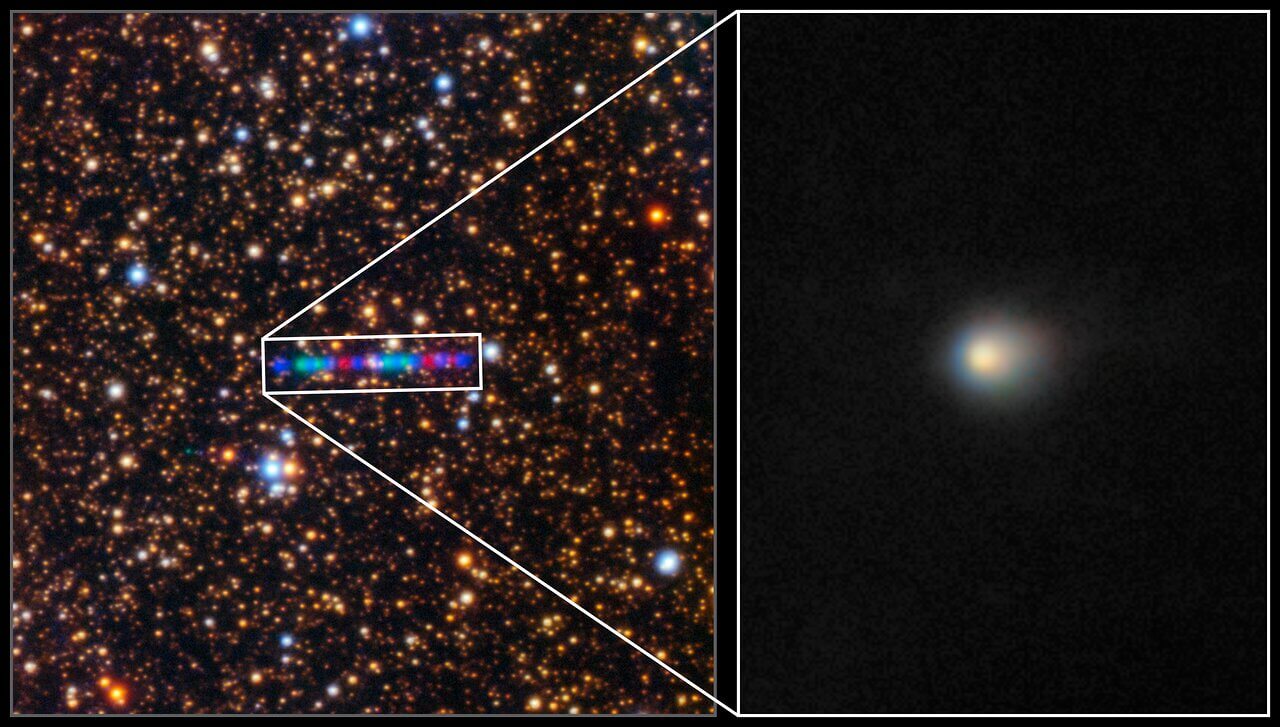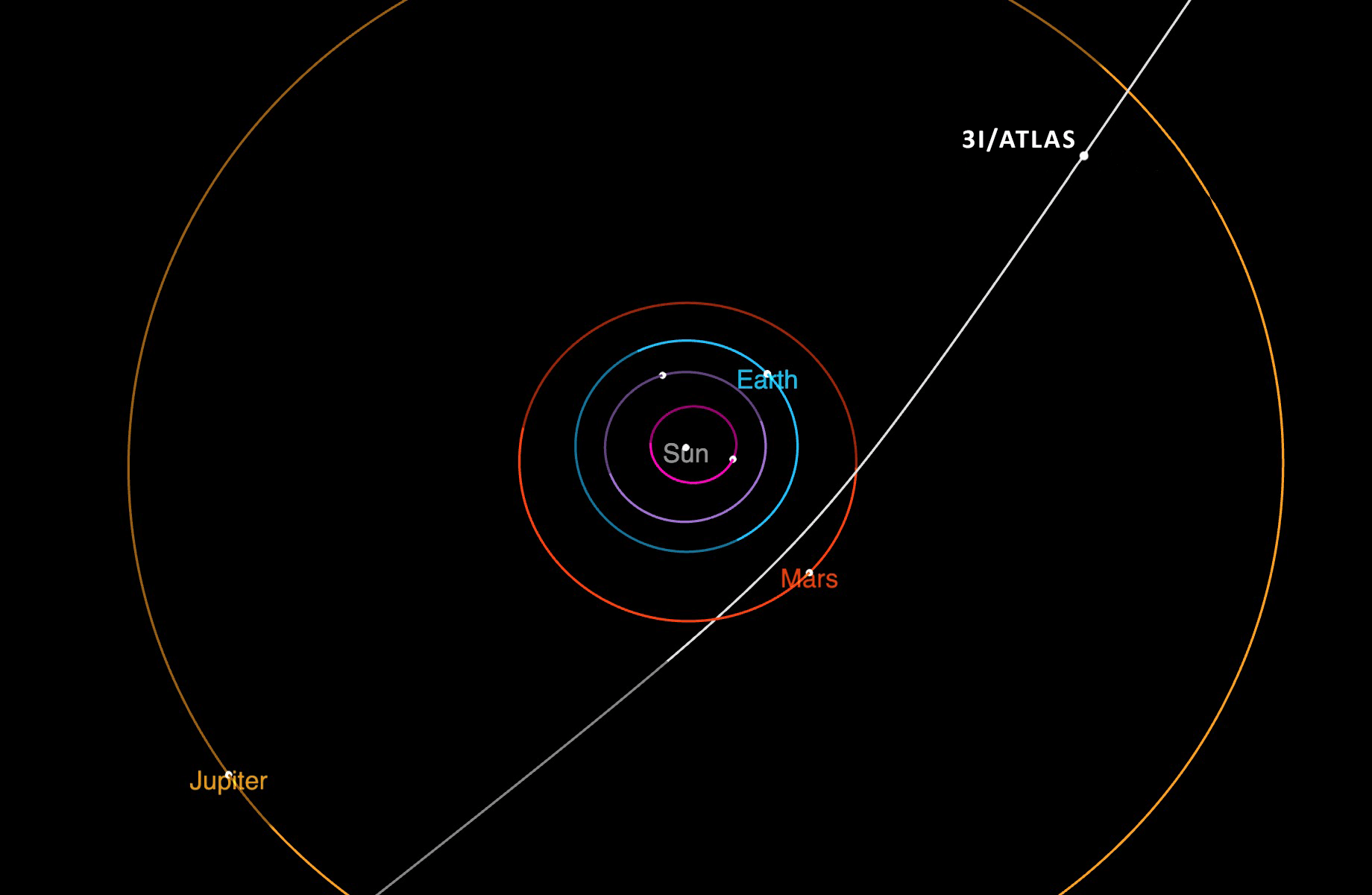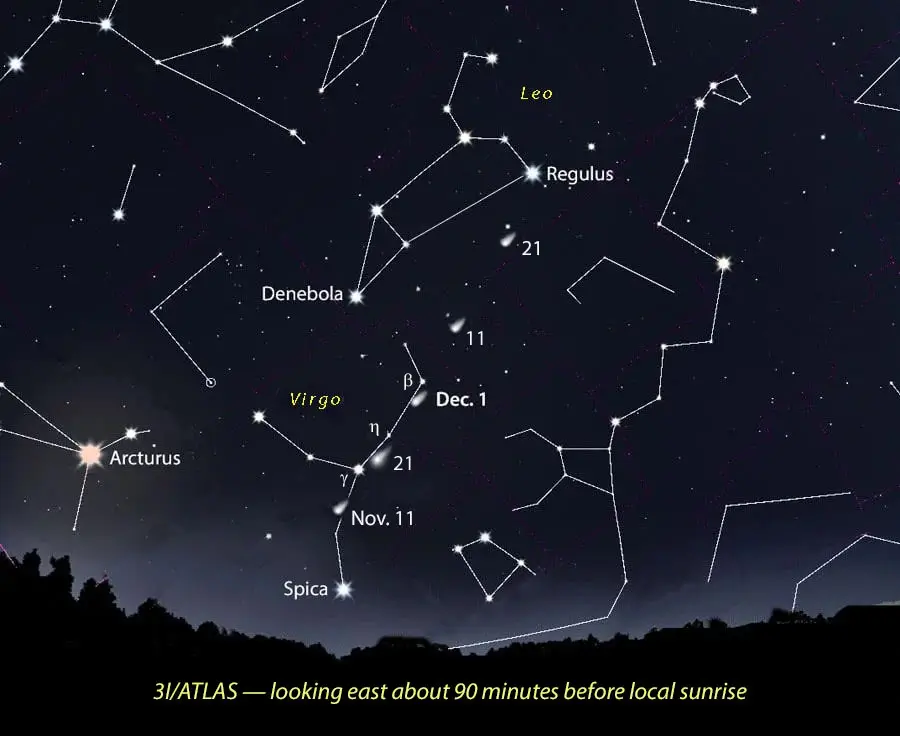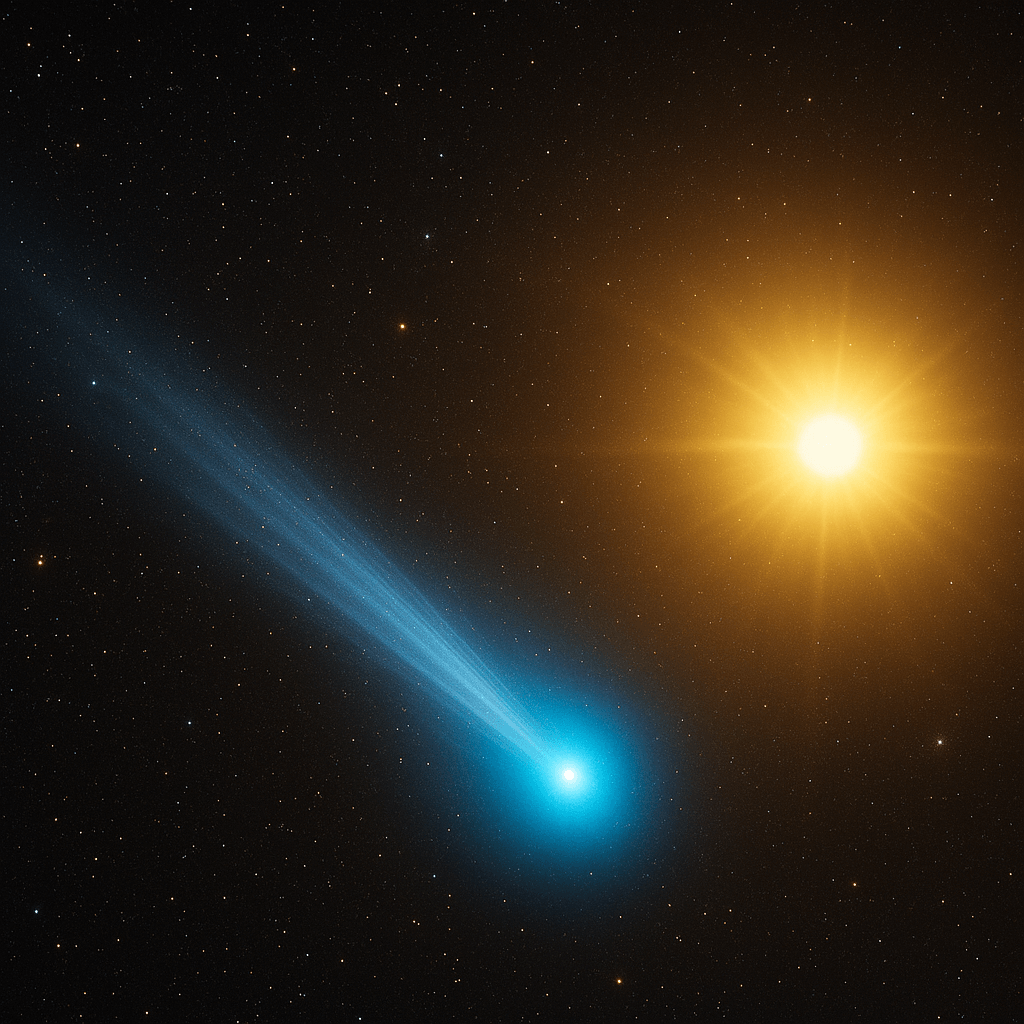What Is 3I/ATLAS?

Text content adapted under CC BY 4.0
In October 2025, astronomers around the world turned their eyes to a remarkable object —
3I/ATLAS (C/2025 N1), the third confirmed interstellar object ever detected.
Following 1I/ʻOumuamua and 2I/Borisov, 3I/ATLAS travels through our solar system on a hyperbolic trajectory (eccentricity ≈ 6) — meaning it’s not gravitationally bound to the Sun and will eventually exit our solar system forever.
Perihelion: October 29, 2025

Credit: NASA / JPL-Caltech / NOIRLab
On October 29 2025, 3I/ATLAS reached its closest approach to the Sun — about 1.35 AU away.
Data from the Hubble Space Telescope and multiple observatories revealed:
- A rapidly expanding coma of gas and dust
- A tail stretching about 30 arcseconds
- Jet-like outbursts directed toward the Sun
As the comet approached perihelion, its gas activity intensified, and brightness increased from roughly magnitude 16 → 9.
Post-Perihelion Observations
After perihelion, 3I/ATLAS began receding from the Sun but continues to fascinate astronomers.
- November – December 2025: visibility returns in the pre-dawn eastern sky, moving from Virgo → Leo
- Closest to Earth: around December 19 2025 at roughly 1.8 AU
- Expected changes: possible tail reorientation and brightness variations as residual volatiles sublimate
From Los Angeles, the comet can potentially be spotted around 4:30–5:30 a.m., using a telescope of at least 300 mm aperture, under dark skies.
The Ongoing Debate — Is It Truly Interstellar?
1️⃣ Interstellar Object Hypothesis (Mainstream View)
- Hyperbolic orbit with eccentricity > 6
- Inbound velocity inconsistent with solar system origin
- Thus, most experts classify it as an interstellar comet, similar to Borisov.
2️⃣ Distant Solar System Origin (Conservative View)
- Could have originated from the Oort Cloud, perturbed inward by stellar gravity
- Some argue initial trajectory calculations have too large an uncertainty to conclusively prove interstellar origin
3️⃣ Artificial Origin Hypothesis (Fringe View)
- Harvard astrophysicist Avi Loeb proposed that 3I/ATLAS’s unusual brightening and color shift might hint at non-natural causes
- However, NASA and ESA scientists firmly maintain it’s a natural cometary body
In short — 3I/ATLAS is almost certainly interstellar, but its composition and origin remain an open mystery.
Why It Matters Scientifically
3I/ATLAS offers a unique window into material that formed beyond our solar system:
- 🌌 Chemical Composition: Analyze interstellar dust and volatile ratios
- ☀️ Solar Radiation Response: Study how foreign ices react to sunlight
- 🧪 Clues to Cosmic History: Infer conditions in other planetary systems
NASA, ESA, and JAXA are coordinating observations, and the James Webb Space Telescope (JWST) is scheduled to monitor it in mid-November 2025.
Observation Guide — Los Angeles Region (Updated)

Used for educational reference — © Sky & Telescope / AAS (2025)
- Best period: Mid-November → late December 2025
- Time window: ~4:30–5:30 a.m., before sunrise
- Direction: Eastern sky — moving from Virgo toward Leo
- Altitude: 10°–20° above horizon before dawn
- Gear: Telescope ≥ 300 mm / 12 inches, long-exposure camera
- Conditions: Clear, dry mornings; low light pollution (e.g., Mount Wilson, Joshua Tree NP, Angeles Forest)
💡 Use tools like TheSkyLive, Stellarium, or SkySafari to track real-time position updates.
Don’t Miss the Visitor from the Stars
3I/ATLAS isn’t just another comet.
It’s an interstellar traveler, a cosmic messenger carrying clues from beyond the Sun’s reach.
As it drifts away from the solar system, the coming months may be our only chance to study it closely.
Under the dark pre-dawn sky of Los Angeles, point your telescope east —
you might just glimpse a trail of blue light that began its journey in another star system.

